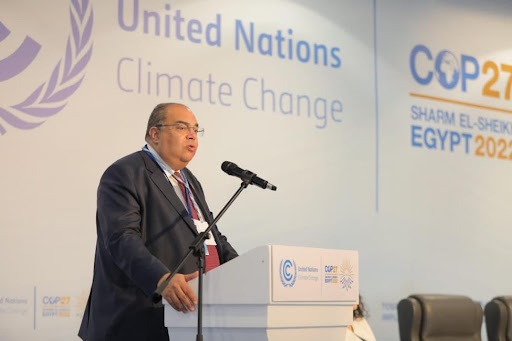Governments representing over half of global GDP on Friday, November 11, 2022, set out a 12-month action plan to help make clean technologies cheaper and more accessible everywhere.

The countries at the ongoing United Nations Climate Conference in Sharm El-Sheikh, Egypt, launched a package of 25 new collaborative actions to be delivered by COP28 to speed up the decarbonisation under five key breakthroughs of power, road transport, steel, hydrogen and agriculture.
The historic support by three COP Presidencies for COP26, COP27 and COP28 drives forward implementation from Glasgow to Sharm El-Sheik and into the United Arab Emirates-hosted COP28 and sends a signal of intent to the private sector.
The actions target sectors, accounting for more than 50 per cent of global greenhouse gas emissions and are also designed to reduce energy costs and enhance food security, with buildings and cement sectors to be added to the Breakthrough Agenda in 2023.
“Today, under the Breakthrough Agenda countries representing more than 50 per cent of global GDP set out sector-specific ‘Priority Actions’ to decarbonise power, transport and steel, scale up low-emission hydrogen production and accelerate the shift to sustainable agriculture by COP28.
“These measures are designed to cut energy costs, rapidly reduce emissions and boost food security for billions of people worldwide.
“The actions under each breakthrough will be delivered through coalitions of committed countries – from the G7, European Commission, India, Egypt, Morocco and others, supported by leading international organisations and initiatives, and spearheaded by a core group of leading governments.
“These efforts will be reinforced with private finance and leading industry initiatives and further countries are encouraged to join,” said the release by the COP26 and COP27 High-Level Climate Champions.
The priority actions include agreements to develop common definitions for low-emission and near-zero emission steel, hydrogen and sustainable batteries to help direct billions of pounds in investment, procurement and trade to ensure credibility and transparency.
It also seeks to ramp up the deployment of essential infrastructure projects including at least 50 large scale net-zero emission industrial plants, at least 100 hydrogen valleys and a package of major cross-border power grid infrastructure projects.
It also included setting a common target date to phase out polluting cars and vehicles, consistent with the Paris Agreement.
By Usman Aliyu
